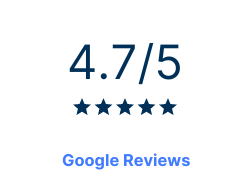
What makes Python so unique as a programming language? Well, for one, it is incredibly friendly for beginners. The whole structure of the language is neat and straightforward. It is an excellent starting point for anyone interested in getting started in computer programming.
Despite its simple, beginner-friendly syntax, it is unbelievably powerful. Whether you are working on a small personal project or want to go all cylinders and create a vast undertaking, Python has your back.
It is used in crafting awesome websites, data analysis, and even artificial intelligence. Mastering this language truly opens the floodgates of opportunities for anyone wanting to upskill.
All it will take you to master Python is a computer, some time, and an interest in learning something extraordinary.
In this Python for Beginners guide, we are diving deep, taking you from the basics all the way through to more advanced concepts of the language.
Before you know it, you will be coding in Python like you have been doing it forever.
Getting Started with Python
Now that you have decided to give this incredible programming language a go, let's make the necessary arrangements. In this section, let's talk about how to load it onto your computer and some essential resources to get you started.
Installing Python
The first step is to download it and install it on your system. Fortunately, it is easy to install it on several operating systems. Here are step-by-step instructions to get started:
For the macOS users
Apple and Python form a pretty formidable team. MacOS comes preloaded with the language. However, it might not be the latest version, so head to Python's official website for the latest MacOS installer.
Download it, open the “.pkg” file, and follow the on-screen instructions to install everything you need, including a Python interpreter on your Apple PC.
For Windows
On the official Python website, download the Windows executable file. Run the “.exe” file and tick the box that says "Add Python to PATH" during installation. Trust us; it will save you some headaches later on.
Follow the instructions on your screen; just like that, you will have Python on your machine.
Another OS?
No matter what operating system you are on, Python has got you covered. Just head to their download page to find what you need. You will get instructions to install it on almost any system, from several distros of Linux to some esoteric operating systems. Python is everywhere.
Python documentation and tutorials
Once you have got Python up and running, their official documentation is a goldmine. Not only is it comprehensive, but it also has all the Python basics and tutorials for beginners.
We would strongly suggest going through it to get your basics right. It is easy to read and understand, even if you are a Python beginner.
Join the Python groups
From forums to social media groups, there is always a Python enthusiast around to lend a hand or share neat tricks.
Don’t feel shy to reach out and ask for help. The communities are incredibly friendly, and you will get some great advice.
Enter PSF
Ever wonder who is steering the Python ship? Enter the Python Software Foundation (PSF). These people not only manage the development but also sponsor community events.
They are like unseen heroes ensuring a smooth experience for Python programming for beginners and pros alike.
If you are a newbie, the PSF offers several resources and help to get you started. So, check them out as you begin cruising along.

Understanding Python Basics
So, now that you have everything to get started on your coding journey, let's uncover the basics of Python programming language.
The beauty of Python's syntax and structure
One of the programming language’s charms is its clean, human-readable syntax. Forget curly braces and semicolons; think of Python as the elegant poet of programming languages.
It uses simple indentation to define blocks of code. So, even if you are a novice, you will fit perfectly in the ecosystem.
Variables and data types
In Python programs, variables are like containers that store data. You have got your integers (like 7), strings (like "hello"), and floats (like 7.1).
Want to change an integer to a string? Python's got functions like "str ()" for that very trick. Type conversion in Python is like learning fun spells.
Learning Python input and output
Using the “input()” function in Python interpreter, your program can ask questions and gather info. And when it's time for your code to generate, “print()” lets it share everything it knows.
Operators-not just mathematical symbols
Beyond just adding and subtracting, operators in Python also allow comparisons. “==” checks if things are equal, "!=" checks for inequality, and more. They are like the punctuation in Python’s language - small but pivotal.
Navigating the Python maze – control flow
- Conditional Statements: Python's “if”, “elif”, and “else” are your trusty tools to make decisions in code. It gives your program a direction when you are at a crossroads.
- Loop-de-loop with Loops: Want your code to do a repetitive task? The “for” loop lets you cycle through items in a list or range. Or maybe you are adventurous, using the “while” loop to keep doing something until a condition is met.
Functions and Modules in Python Code
Now that we have a bit of a grip on the basics of the language, let's dig deep and understand a few intricacies that are different from other languages.
Functions - Python's little helpers
In Python programs, functions are blocks of reusable code that perform specific tasks. Defined using the “def” keyword in the Python interpreter, they take input and return results.
Think of functions as your little code minions. You tell them what to do once, and they will happily do it again and again whenever you call their name.
Defining a function is as simple as saying “def my_function():” and then telling it what to do underneath. And whenever you need its help, just summon it with “my_function()”.
Passing notes & getting replies
Do you want to whisper secrets (or parameters) to your function? Maybe something like “my_function(secret_message)”. Your function can then use that “secret_message” in its task.
Sometimes your function wants to whisper back. That's where “return” comes into play. It allows your function to send a reply, like a coded message making its way back to you.
Modules - Python's treasure chests
Modules are files containing Python programming code, often functions and variables, which you can import into other scripts to prevent code repetition and enhance organisation.
- Built-in Modules: Python, being the generous soul it is, comes with a treasure trove of built-in modules. Think of them as pre-packed toolkits. Need to work with dates? The “datetime” module's got your back. To use these, you just need a simple spell, “import datetime”.
- Custom Modules: Sometimes, you have got your own bag of tricks you would like to reuse in different projects. Why not make your module?
Just save your functions in a “.py” file, and you can import them into other scripts.
Python Data Structures
Unlike other languages, Python's data structure is simple and intuitive. Here are some features that should give you a good idea:
Lists, Tuples, and Sets
Lists are like your flexible friends, ever ready to grow or shrink. It is an ordered collection of values. Just use square brackets: “my_list = [1, 2, 3]” to create lists in Python programs.
Tuples in Python language are ordered, immutable collections defined using parentheses. Unlike lists, they can't be modified after creation. They are helpful for fixed data. You create a Tupule using parenthesis: “my_tuple = (1, 2, 3)”.
Sets are unordered collections of unique elements. Defined using curly braces, they support operations like union and intersection: “my_set = {1, 2, 3}”.
Manipulating lists, tuples and sets
Add to a list with “append()” and remove with “remove()”. Shuffle things up.
How to change Tuples? Well, once they are set, they are set. No changes allowed.
For sets, use “add()” to include new members and “discard()” to bid them goodbye.
Slicing, dicing, and indexing
It is possible in Python programming to access and manipulate the contents of lists, tuples and sets. Here is how to do it:
Lists and tuples
Slicing allows you to extract a portion of a list or tuple. Using the colon ”:” operator, you can specify where to start and end the slice. For example, “my_list[1:4]” fetches items from index 1 (inclusive) to 4 (exclusive). Tuples use the same logic: my_tuple[1:4].
While not an official term in Python programming documentation, "dicing" refers to slicing with an additional step parameter. For instance, “my_list[::2]” gives every second item from the list. Similarly, “my_tuple[::2]” works for tuples.
Indexing refers to accessing a specific item based on its position. “my_list[0]” fetches the first item, “my_list[1]” the second, and so on. The same indexing method applies to tuples. Also, negative indexing, like “my_list[-1]”, gets the last item.
Sets
Sets, being unordered collections, don't support traditional slicing and indexing like lists and tuples.
- Accessing: You can't access individual elements of a set using an index. However, you can iterate over a set using loops or check for the presence of an element using the “in” keyword.
- Manipulating: Sets offer methods like “add()” and “remove()” to modify their contents. Furthermore, sets are handy for operations like union (“|”), intersection (“&”), difference (“-“), and symmetric difference (“^”).
While lists and tuples offer fine-grained control over element access with slicing, dicing, and indexing, sets prioritise uniqueness and powerful set operations, sacrificing direct access to individual elements.
Dictionaries - the key to unlocking data
Think of dictionaries as mini databases you can create on the fly. They look like this: “my_dict = {"apple": "red", "banana": "yellow"}”. Every fruit has a colour, right?
Access values with them: “my_dict["apple"]” will gladly tell you “red.” Want to add a new fruit to the mix? Just assign a colour to a new key: “my_dict["grape"] = "purple". Voila, more fruit salad ingredients!
In this charming maze of Python data structures, you have containers for all occasions. Whether sorting, storing, or pairing up data, there's always the perfect structure waiting to be of service.
Python Strings and Regular Expressions
Now that we have a decent grip on the basics, let's talk about two crucial aspects: strings and expressions.
Strings
Strings in Python language are a fascinating bunch. Picture them as a series of characters strung together, like beads on a necklace. You can craft stories, ask questions, or simply share a warm "Hello!" with the world.
- String Manipulation: Ever wanted to merge two strings? Just add ('+') them together. Or perhaps you want to repeat a string? Multiply ('*') it by a number, and voilà! Python programs even let you pick out characters or slices. So, “greeting[1:4]” from "Hello" gives you a cheerful "ell".
- String Methods: Python strings come packed with nifty tools (methods). Want to shout? Use “upper()”. Feeling mellow? Try “lower()”. Searching for a character or word? “find()” it. The fun doesn’t stop there. With methods like “split()”, “replace()”, and “strip()”, there is always a trick up Python’s sleeve to make your coding more interesting.
Regular expressions (RegEx)
Regular expressions help you find, match, and dance with patterns inside these tales created by strings.
- Pattern Matching: Imagine you are looking for a specific word in a large book, but it's disguised in various forms. RegEx is your trusty magnifying glass, effortlessly spotting those words, no matter their camouflage. Using Python's “re” module functions like “search()” and “match()” is proven effective for doing so.
- Pattern Manipulation: RegEx isn't just about finding patterns. It’s also about crafting new information too. With functions like “sub()”, you can replace old patterns with new stories, giving your text a fresh twist.
In essence, while strings in Python are your storytellers, regular expressions are the skilled editors, ensuring every tale is told right.
Object-Oriented Programming (OOP) in Python
You might have heard that Python is an object-oriented programming language. What it means is that it simply organises the data and functions into reusable units called objects.
At the heart of OOP lies the idea that code can be more intuitive and organised by modelling it after real-world entities. It's like shaping clay: you define its characteristics (attributes) and actions (methods) to breathe life into your creations.
Crafting classes and objects
A class is like a blueprint. Think of it as a cookie cutter, while objects are the delicious cookies you pop out.
When you design a class in Python language, you are laying out a plan for how an object should look and behave.
So, if you create a “Dog” class, every dog object you whip up will, by default, have attributes like “breed” and methods like “bark()”.
Inheritance and polymorphism
In the OOP realm, classes can inherit traits from other classes.
If you have a “Vehicle” class, you can derive a “Car” class from it, inheriting all the general vehicle-y stuff while adding car-specific features.
Polymorphism is a fancy term with a simple concept: different objects can be treated as instances of the same class. Whether it's a cat, dog, or parrot, if they all "speak", that's polymorphism in action – the same action, different results.
Encapsulation and abstraction
Encapsulation is about bundling data and methods into a single unit and restricting direct access. It's like having a secret diary: others know it exists but can’t read it without your permission.
Abstraction? It’s the art of hiding complex realities while exposing only the necessities. It’s like using a TV remote: you don’t need to know its inner workings to enjoy your favourite show.
Exception Handling in Python Programming Language
Just as our everyday lives have unexpected twists and turns, so does the journey of a Python program. And in the programming world, these unforeseen events often manifest as errors or exceptions.
So, how do programmers navigate through these unpredictable waters?
Enter the world of Exception Handling in Python.
Errors and exceptions in Python
Imagine you are cooking a new recipe for the first time. Sometimes, you might miss an ingredient or misread a step.
Similarly, while coding, you might forget a colon or try to access a non-existent list item. Python, being an understanding friend, notifies you of these hiccups in the form of errors and exceptions.
But instead of letting our entire program crash and burn, we can handle these exceptions gracefully.
The Try-Except Safety Net
Using a “try-except” block is like having a safety net while walking a tightrope. You encase your risky code inside the “try” block. If everything goes smoothly, fantastic!
But if something goes awry, you fall into the loving embrace of the “except” block instead of plummeting into chaos. You can print a friendly message, log the error, or take corrective action here.
Tackling different types of exceptions
Python has a colourful variety of exceptions: “ValueError”, “TypeError”, “IndexError”, and the list goes on. It's like having different tools for different jobs.
By specifying different “except” blocks, you can catch and handle each type of exception in its unique way. You could have a generic catch-all “except” at the end, but you can provide more detailed and helpful feedback by handling specific exceptions.
Exception handling in Python is like having a Plan B (and C, and D...) for when life throws curveballs.
File Handling in Python Programming
Handling files of code in Python programming is quite simple. It is possible to read and write to files and use context managers with them as well.
Reading from and writing to files
Reading from a file is like opening a book and absorbing its tales in Python. Using the “open()” function, we can access the contents of a file, line by line or all at once. Want to pen down your code? The “write()” method allows us to jot down our thoughts, add new content or rewrite entire blocks of Python code.
File modes and operations
Just as there are rules in a library (e.g., reference books can't be taken outside), files in Python have modes dictating their use. The most common ones are 'r' for reading, 'w' for writing, and 'a' for appending.
Each mode lets you interact with the file in specific ways, ensuring you don't accidentally overwrite a treasured novel or read from a blank page.
Context managers for file handling
Ever left a book open, only to find its pages crumpled later?
Context managers (using the “with” statement) ensure our Python files are treated carefully. Automatically closing files after operations ensures that no precious data is left unsaved or vulnerable. Treating the books (files) with the respect they deserve is a gentle reminder.

Introduction to Data Analysis with Python
At its core, data analysis is like detective work. We sift through vast information to uncover insights, solve mysteries, and make informed decisions.
Whether predicting tomorrow's weather or decoding consumer preferences, analysing data empowers us to make sense of the world.
And given today's digital deluge, its significance is skyrocketing.
NumPy and Pandas
Enter NumPy and Pandas - Python's superstar libraries for data aficionados. Imagine them as your magical toolbox. Numpy is all about numerical operations. Need to perform complex calculations on massive arrays? NumPy's got your back.
On the other hand, Pandas is like an Excel wizard; it effortlessly handles and manipulates structured data with its DataFrame magic.
Data manipulation and analysis
With our toolbox ready, we can clean data (say goodbye to pesky missing values), slice and dice it to our heart's content, and perform fundamental statistical analyses.
Whether finding the average temperature of a month or spotting sales trends, Python enables us to transform raw data into actionable insights.
Introduction to Python GUI
At the heart of every software, beneath the sleek buttons and interactive sliders, lies the realm of Graphical User Interfaces (GUIs). Gone are the days of purely command-line interactions.
GUIs offer a visual, intuitive, and user-friendly way to engage with applications. Think of it as the beautiful, user-friendly facade of a building, while the underlying Python code is its sturdy foundation.
Tkinter - Python's GUI maestro
If you are wondering how to craft these GUIs in Python, let us introduce you to the show's star - Tkinter.
It's Python's standard GUI library, kind of like the trusty paintbrush for a budding artist. With Tkinter, creating windows, buttons, and dialogue boxes becomes an easy task.
It offers a rich set of widgets and is straightforward enough for beginners to dive into yet robust enough to design intricate applications.
Introduction to Python Web Frameworks
While it began as a simple scripting and programming language, Python has become a web development powerhouse. Offering clarity and simplicity, Python makes web coding feel less like unravelling a complex web and more like weaving a story.
Django - the jewel of Python’s web frameworks
As we navigate Python's web landscape, we can't help but be drawn to the glimmering city of Django. Often dubbed the "web framework for perfectionists with deadlines", Django provides a high-level, all-inclusive experience.
Imagine building a skyscraper with a ready-made foundation, walls, and even some decor. That’s Django for you. It pushes the rapid development mantra, letting us construct robust web applications with minimal fuss.
With Django in your toolkit, you are well-equipped to sculpt digital marvels with efficiency and flair.
Machine Learning with Python
At its core, machine learning (ML) is a bit like teaching your dog new tricks, but here, the dog is your computer. Feed it enough data (like showing your dog how to fetch), and voilà, it learns to make predictions or decisions without being explicitly programmed.
From recommending the next catchy song on your playlist to spotting patterns in vast datasets, this is tech's answer to clairvoyance.
Scikit-Learn - Python's ML maestro
Now, how does Python fit into this? Enter Scikit-Learn - the superstar toolkit of the Python ML stage. Think of it as a Swiss Army knife for machine learning. Born from the vibrant open-source community, this library simplifies complex machine-learning tasks, turning them into a walk in the park.
The intuitive interface and robust algorithms make it a favourite among ML newcomers and seasoned data scientists.
Whether you are dabbling in classification, regression, or clustering, Scikit-Learn has the tools to make the process smoother than your morning coffee. Its simplicity, combined with its power, makes it the go-to for both rookies and ML mavens.
As the cornerstone of Python ML projects, Scikit-Learn showcases the perfect blend of simplicity and power, enabling everyone to tap into the wonders of artificial intelligence.
You might also want to check out our ChatGPT course to learn more about AI and machine learning.
Python Resources and Further Learning
While learning Python is fun and exciting, expert guidance will help you reach your goals faster.
Structured courses
If you are someone who likes a structured journey, Nexacu serves as your compass. We offer comprehensive courses for Python beginners curated by industry experts, ensuring that you get both the breadth and depth of the subject.
You can attend courses online or opt for face-to-face classes per city schedules. We offer three Python Training Courses:
- Beginner: A short 1-day Python programming for beginners with 6 CPD hours covers all the basics in detail. It is an excellent course for beginners with little to no experience in programming.
- Intermediate: It will build on your foundation knowledge, and you will learn how to manipulate data, plot with Matplotlib, and create custom functions and visualisations.
- Advanced: This course focuses more on working efficiently with Python. You will learn concepts of flow structures, loops and create custom functions.
Our maximum class sizes are 10, so you will get all the attention from the instructors you need. All these courses are available online, as well as instructor-led training. Please book your seat today.
Video tutorials
For visual learners, platforms like YouTube are an endless treasure trove. You will find several channels helping you unwrap Python's mysteries through engaging video tales, making even the trickiest concepts feel like captivating stories.
Written tutorials
Numerous blogs and dedicated websites beckon if you are the type to relish the written word. Places like the Python official documentation are fantastic scrolls of knowledge, ensuring you are always on the right path.
Python Projects for Beginners
Ready to roll up your sleeves and dive into some incredible projects? Trust us; there is nothing like the thrill of seeing your Python code come to life.
Let’s embark on this crafting journey where your Python tools await to turn ideas into reality.
Trying simple scripts
Start small, they say, and they are right. Your initial foray could be crafting simple Python scripts. Maybe a calculator or a to-do list? Or how about a fun number-guessing game?
These mini-projects not only boost your confidence but also cement foundational concepts.
Web development
Once you are cozy with the basics, why not make a splash in the digital ocean with a basic web development application? Dive into frameworks like Flask or Django and build a blog or a personal portfolio.
It’s like crafting your digital castle, brick by brick.
Deciphering data's secrets
By learning Python, you can embark on data analysis adventures. Fetch a dataset that piques your curiosity, maybe something on movie ratings or weather patterns? Use libraries like Pandas or Matplotlib, and unveil the stories hidden in numbers.
Remember, these are just suggestions. There are several Python projects for beginners that you might try. So, once you get the hang of it, let your imagination run amuck and create to your heart's content.
You may also want to read: Real-World Applications of Python
What are the Benefits of Learning Python?
Python is one of the fastest-growing languages in the world right now. Thanks to its simplicity, versatility and adaptability, it is used everywhere, from building apps to websites.
Here is why you should consider learning it:
It is simple
First things first, Python is simpler than other languages. Its clean syntax is like reading English. You won't be wrestling with complex code but instead having friendly chats with your computer. You can begin your journey with a simple Python tutorial, making it perfect for beginners.
Versatility champ
Python's adaptability is genuinely out of this world, from web development to artificial intelligence and even in astronomy. Whatever your passion, Python’s probably got a tool for it.
A booming job market
With its rising popularity, knowing Python can give your CV that extra sparkle. Companies, big and small, are on the hunt for Python pros.
A welcoming community
The Python community is one of the best coding communities out there. Whether stuck on a problem or looking for a Python tutorial, countless forums, workshops, and meet-ups are brimming with folks eager to help and share.
Future-proofing yourself
As industries evolve, so does Python. It's constantly growing, with new libraries and tools sprouting up. Learning Python is like planting a seed for a future bursting with opportunities.
Whether you are just dipping your toes into the coding world or looking for a fresh challenge, Python is the best choice of programming language for you.
FAQs
Got some burning Python queries? No worries! Here's a quick round-up of some questions we often hear from beginners like you:
I'm just starting; is Python for beginners like me?
Absolutely! Python is like that friendly teacher we all loved in school. It's easy to understand, and the vast community behind it makes sure you never feel lost. You are just a Python tutorial away if you get stuck along the way.
Can I master Python in a month?
Well, you can get comfortable with the basics in 30 days. But, like any worthy endeavour, true mastery takes time and practice. Dive in, stay curious, and remember: the coding adventure is a marathon, not a dash.
Takeaway: Become a Python-Pro with Nexacu
And there we have it, future Python masters. Remember the golden rule: every single coder starts with that first uncertain step, butterflies in the stomach and dreams in their eyes.
Know that as a beginner in the world of Python programming, uncertainties can happen. This is where our seasoned trainers come in to help you sail the deep waters of the Python.
With fantastic places like Nexacu by your side, the Python journey feels less like homework and more like an exhilarating treasure hunt. Fancy diving deeper? Check out our stellar Python courses, starting from the basics through our Beginner course.
 phone
phone
 email
email
 enquiry
enquiry
























